Kissimmee Prairie Preserve, Okeechobee, Florida
After they had heard the king, they went on their way, and the star they had seen in the east went ahead of them until it stopped over the place where the child was. When they saw the star, they were overjoyed. ~ Matthew 2:9 I love breaking down scripture verse by verse. For me, it causes me to pause and think about each one and pick up on things I’ve never given any thought to, or perhaps never paid any attention to before. If we believe that all of scripture was inspired by God Himself (II Timothy 3:16), we ought to pay attention to every bit of it. I believe that if it wasn’t important, it wouldn’t be here, so that makes every word important, right? Today, I see that the Magi were overjoyed when they saw the star – again. It makes me think that they stopped to see Herod, not only as a courtesy to the reigning monarch which was proper, but also because they could no longer see it. If that’s the case, then it seems logical to me that God wanted Herod and the Jewish religious leaders to know of the birth of the Messiah and He chose these distant foreigners to deliver His Message and point out prophetic details about His birth.

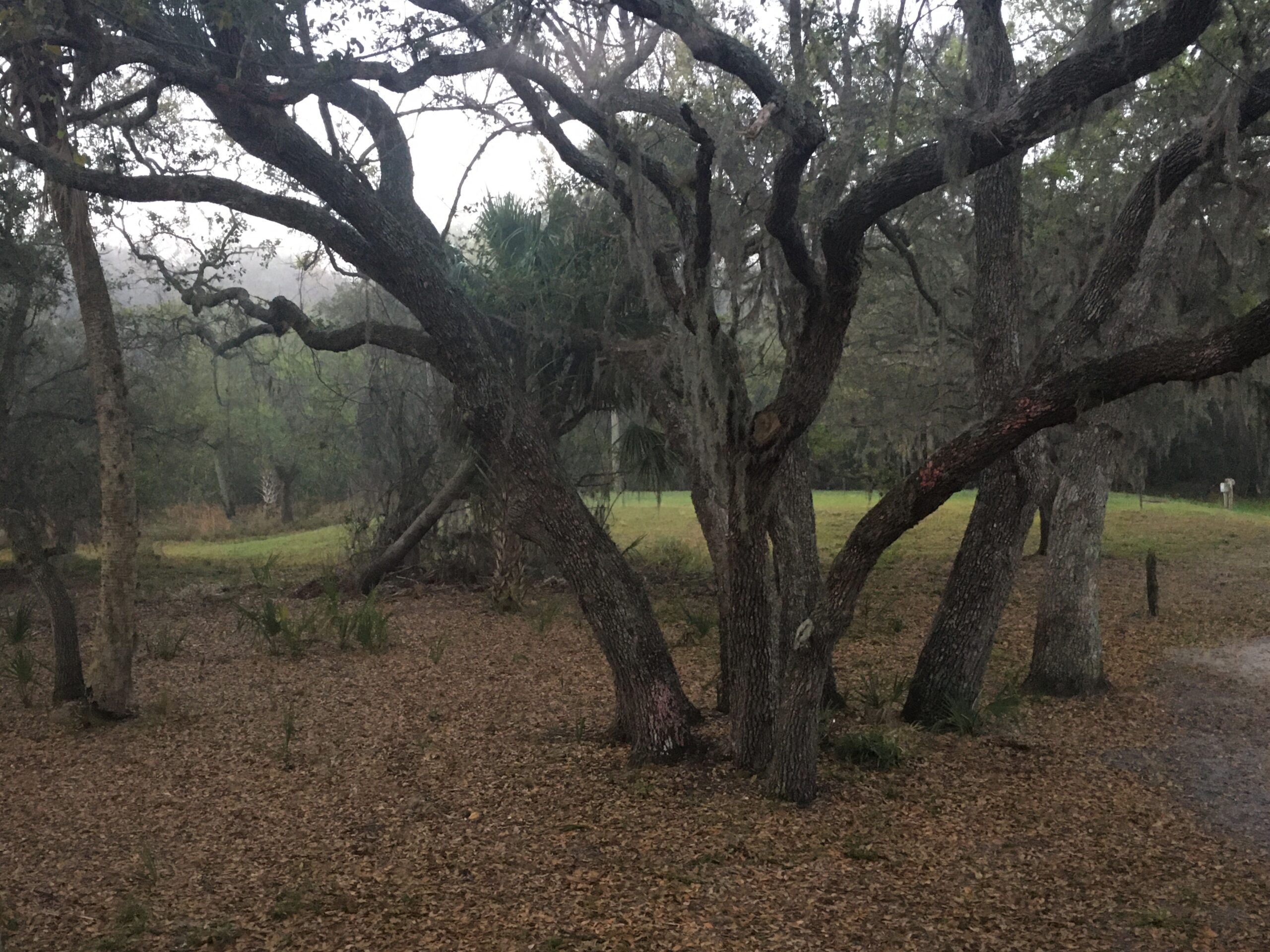
This is a wonderful site!!
Before 7:30am, we’d already experienced some delightful bits of nature! With a wide-open area in front and to our right, we took in the dense fog blanketing the area as the sun tried valiantly to penetrate it. There was also a tom turkey strutting around opening and closing his tail feathers as his harem of six wandered along around him picking at the grass; a committee of four vultures waking up and drying their fog drenched wings in the dead tree in front of us; and a robin in the tree out back. Yes. A robin. Probably not surprising for some of you, but for those of us with roots in Ohio, a robin in February is unheard of. 😊
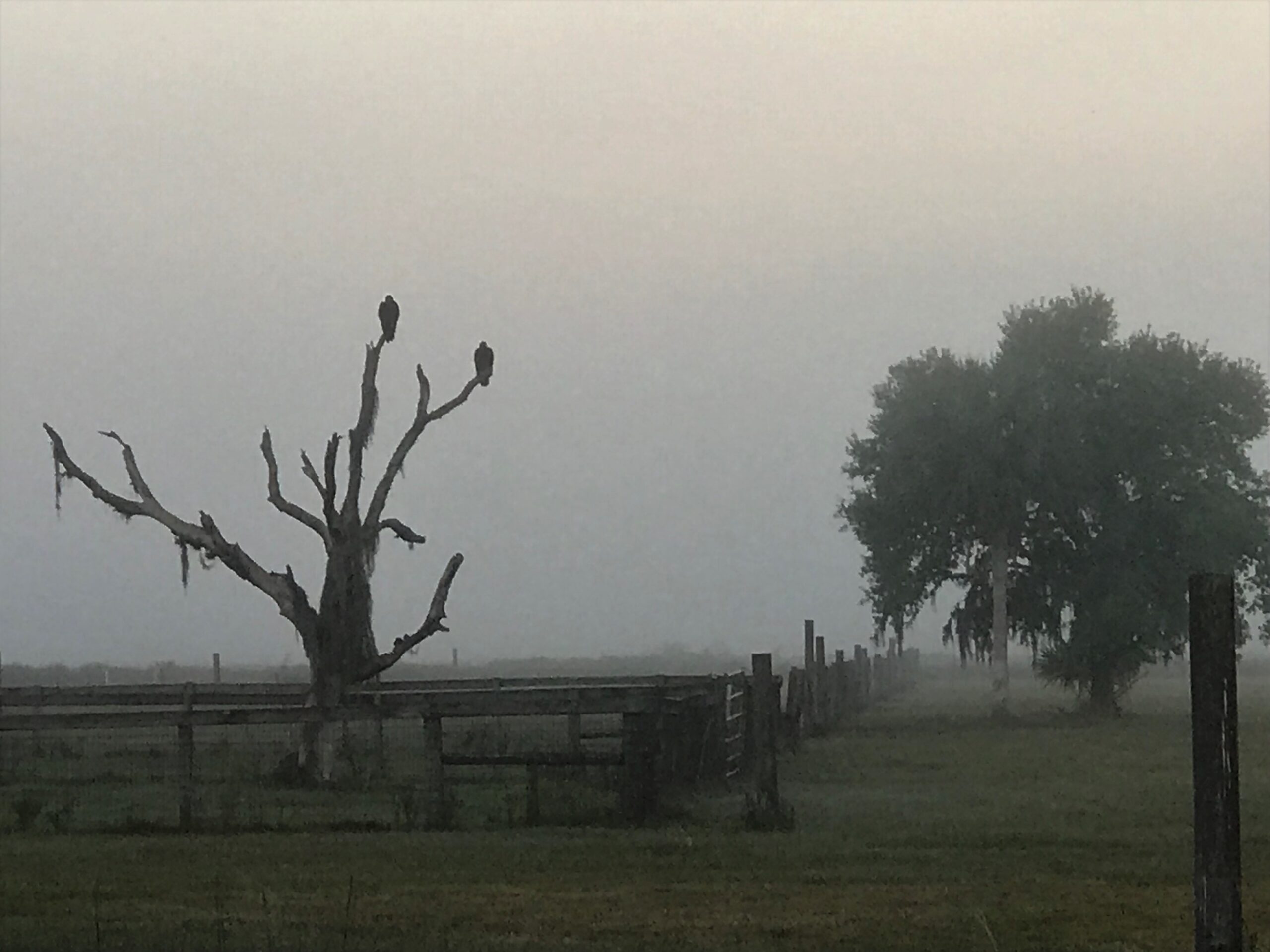
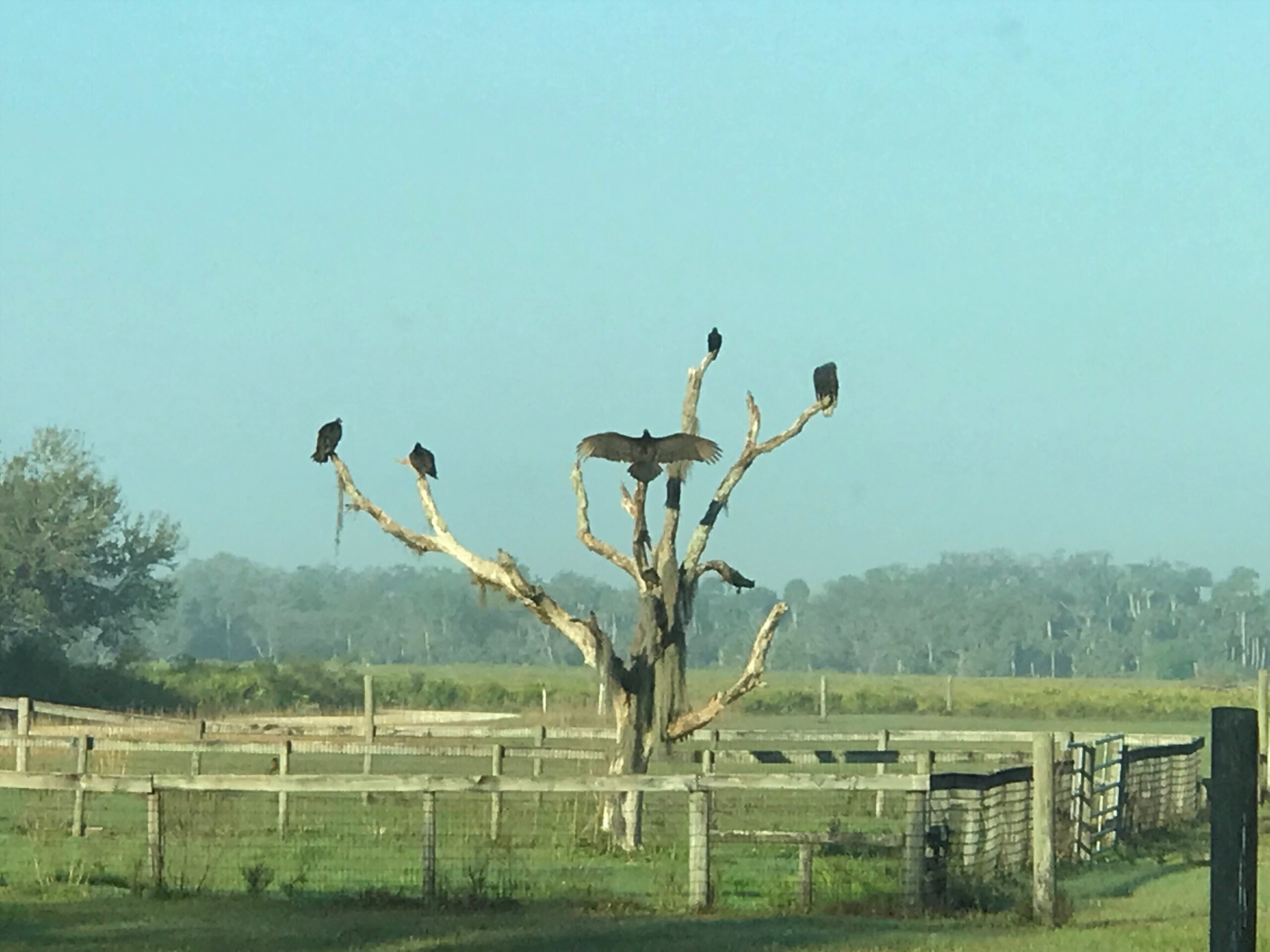
We spent a good bit of time observing those turkeys. (Would you believe 2-hours and 45-minutes?!?) One of the hens ran off behind us, and Tom walked slowly to the edge of the ditch in front of us and stood there gobbling and fluffing his feathers. As soon as she crossed back over, he stopped vocalizing and walked away. Too funny!
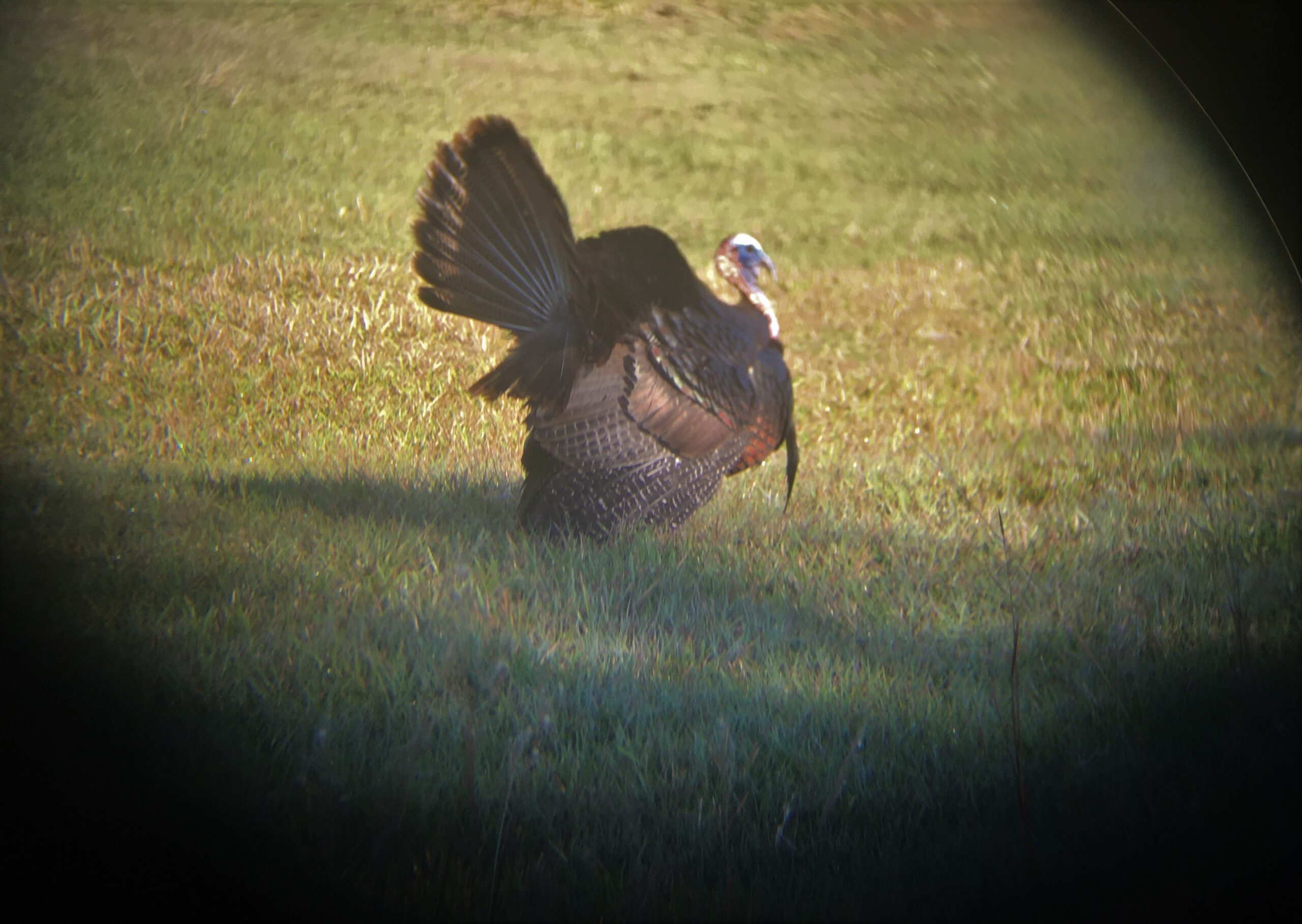
You can’t really tell, but his head was blue. At other times it turned red.
Isn’t God incredible?!?
So, let’s talk turkey for a minute:
- Turkeys don’t just gobble, they make a lot of different sounds. In fact, turkeys make all kinds of sounds, including a cackle when they fly, clucks and purrs, and an excited yelp. A male turkey’s gobble can be heard up to a mile away.
- Turkey droppings tell a bird’s sex and age. Male droppings are j-shaped; female droppings are spiral-shaped. The larger the diameter, the older the bird.
- An adult turkey has 5,000 to 6,000 feathers on its body. (Just think! Someone has to pluck all those turkeys we eat in November!)
- Turkeys are fast. They may look off-kilter — tilting their heads and staring at the sky — yet they’re fast. Turkeys can clock 18 miles per hour on foot and up to 50 miles per hour in flight. When they need to, turkeys can swim by tucking their wings in close, spreading their tails, and kicking.
- Domesticated turkeys cannot fly.
- Adult male turkeys are called gobblers or toms, females are called hens. Young chicks are poults, while juvenile males are jakes and juvenile females are jennies. A flock of turkeys can be called a crop, dole, gang, posse, or rafter.
- Young turkeys — poults — scarf down insects like candy. They develop more of a taste for plants after they’re four weeks old.
- The Wild Turkey (Meleagris gallopavo) is one of only two birds native to North America that has been regularly domesticated, the other being the Muscovy Duck.
- The English name “turkey” derives from historic shipping routes that passed through the country of Turkey on their way to delivering the birds to European markets.
- There are six distinct subspecies of Wild Turkeys: Eastern, Osceola, Rio Grande, Merriam’s, Gould’s, and South Mexican.
- Wild turkeys sleep in trees
- Turkeys spend most of their time on the ground, but when it’s time to sleep, they fly up into trees. This is because turkeys can’t see well at night, and to protect themselves from predators, they roost at dusk and fly down at dawn.
- They can change colors
- Well, their heads do at least! You can tell a turkey’s emotions by the color of their heads. Colors can change from red to blue to white, depending on how excited or calm they are. The more intense the colors are, the more intense their emotions.
- While Benjamin Franklin did not advocate for the turkey as our National Bird, he did prefer them to bald eagles. In a letter to his daughter, Benjamin Franklin called the bald eagle “a bird of bad moral character” because they steal from other birds. He called the turkey a “much more respectable bird,” “a bird of courage,” and “a true original native of America.”
- Turkeys can see better than humans. Among the more surprising facts about turkeys is that they have three-times better vision than humans. They can also see in color, and their eyesight covers 270 degrees.
- It’s widely believed that the first presidential pardon for turkeys started when Abraham Lincoln’s son pleaded that the bird intended for Christmas dinner had a right to live just like any other creature, but it wasn’t until 1989 during George H.W. Bush’s administration that the official pardoning ceremony started.
- Snoods, the fleshy appendage that extends over a turkey’s beak, is for finding a suitable mate. According to the Journal of Avian Biology, females prefer males with longer snoods, and snood length can also be used to predict the winner of a competition between two males.
- The wild turkey was hunted nearly to extinction by the early 1900s, when the population reached a low of around 30,000 birds. But restoration programs across North America have brought the numbers up to seven million today.
All that information came from various sources on the world-wide-web. I didn’t copy all the sources down. Sorry!
At some point, after our turkey watching, we walked to the Ranger Station to see what kind of extracurricular activities they could share with us. There’s a ‘buggy’ ride they offer for free, but it’s only on the weekends and they’re full up, but there’s always the possibility of a cancellation or a no-show. (fingers crossed!) They also have a night hike on Saturday evenings, which is available to anyone who shows up. Should be fun!
We also saw more critters (or evidence thereof) during this short walk. First of all, the turkeys were hanging out behind our home, so we got to see and hear them up-close! One even flew out of a tree onto the ground as we watched! Then we saw a raccoon cross the road and disappear into the brush. There was also evidence of a snake having slithered across the sandy road.
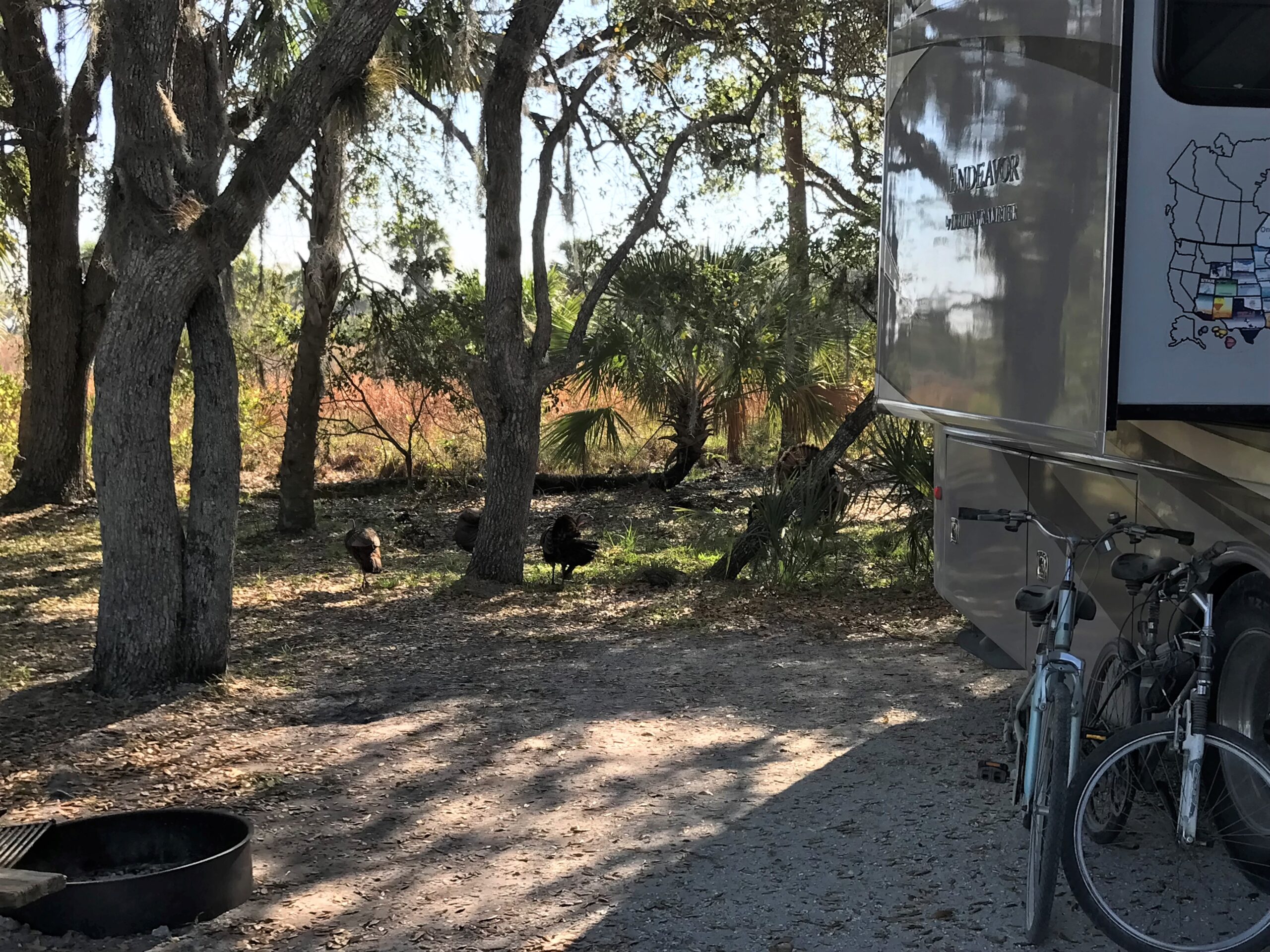
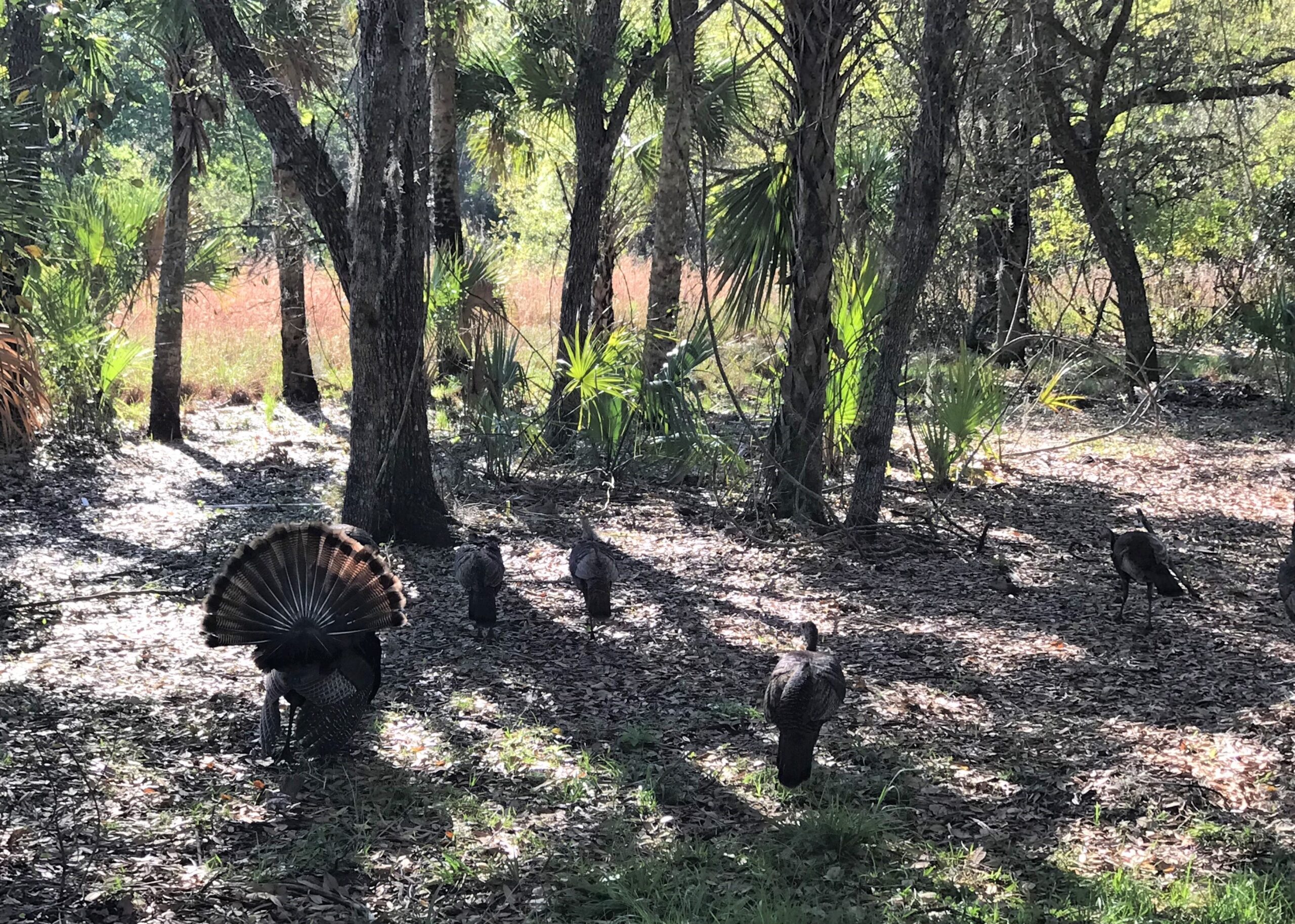
Right after lunch, we decided to ride our bikes down the long, flat dirt road we came in on. Why we chose the middle of the day is anyone’s guess. At least it was pretty breezy, so that kept us cool, because it’s hot here (close to 90!) when the sun’s a-shinin’! When we arrived at our destination, we noticed right away that the water level seemed way down from what we remember. If I get a chance, I’ll pull up an old picture and check. There were a couple of gators and a few birds and some fish grabbing bugs from the surface of the water.
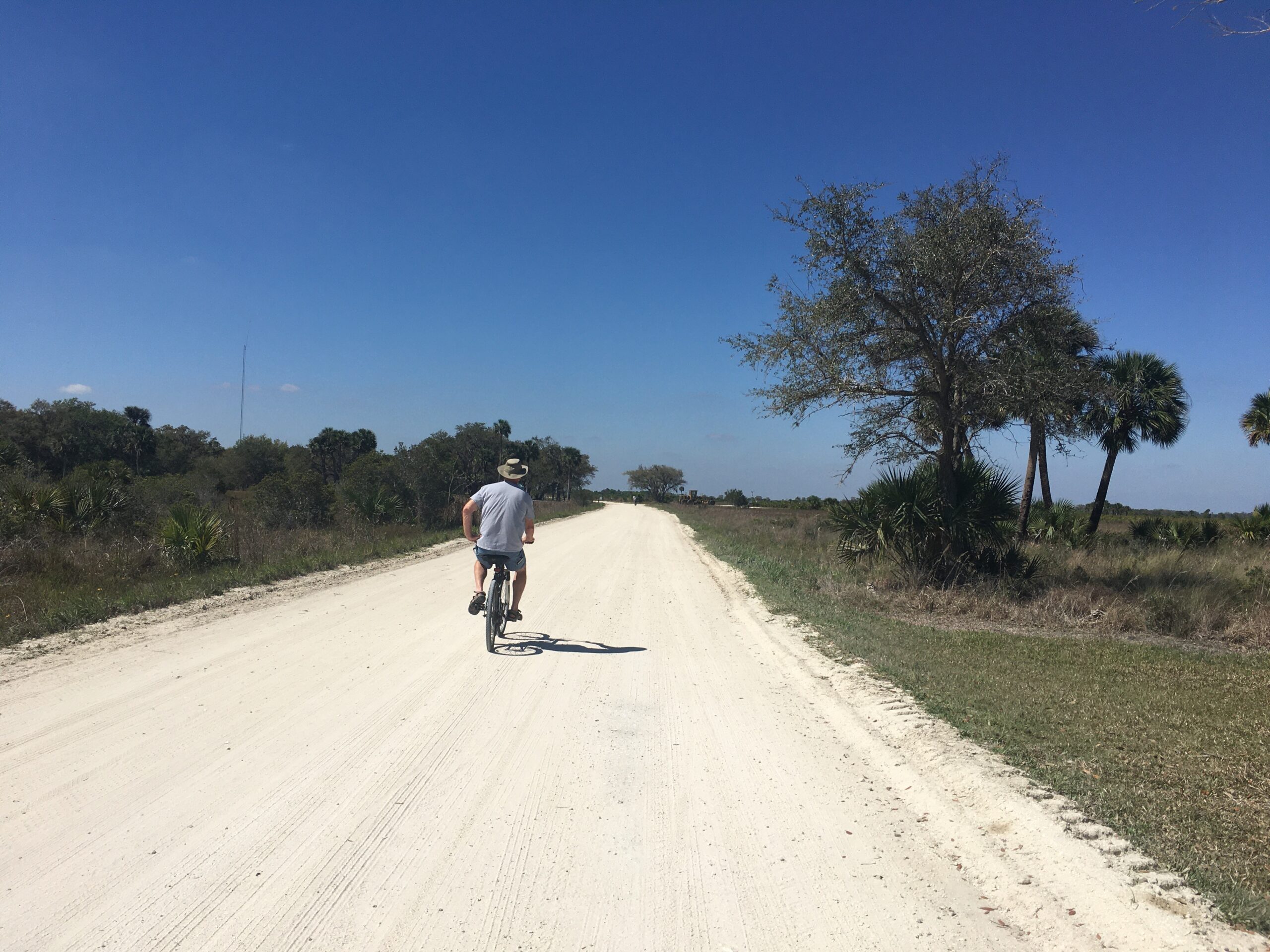

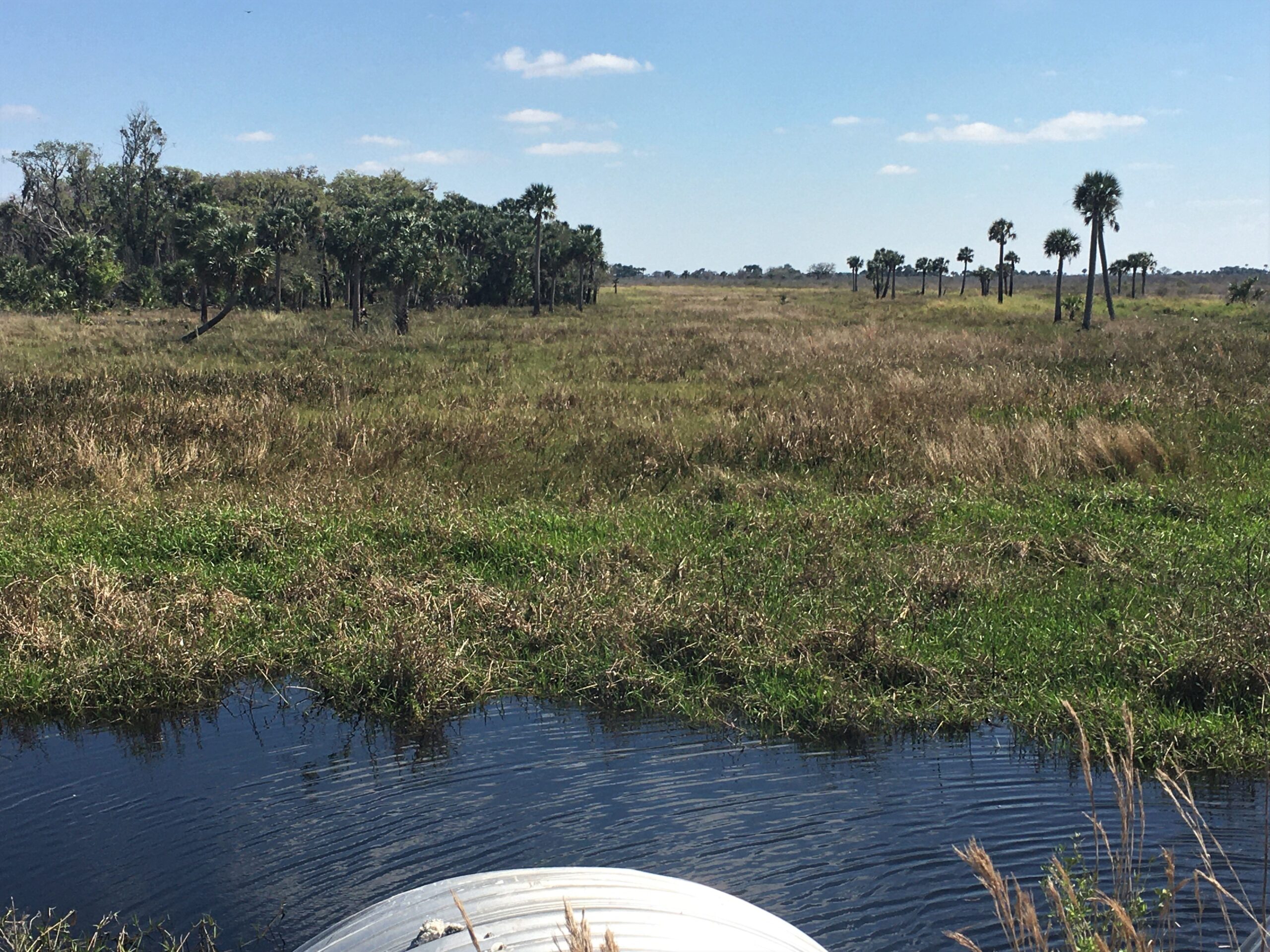
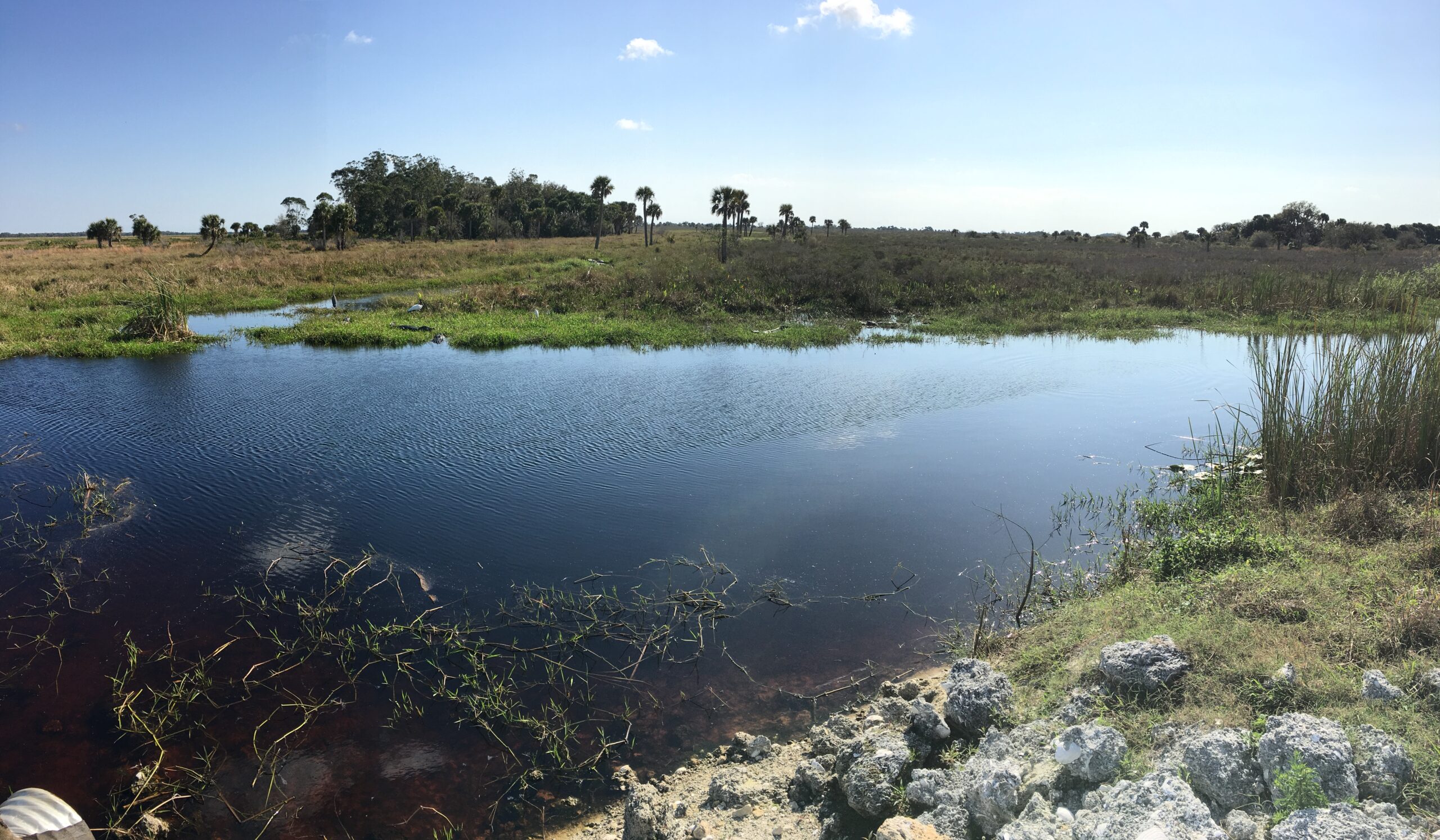
We came home, I did some menu planning and looked up recipes for some tidbits I have in the freezer to use up, and baked a chocolate cake. And I still had time to blog, but it was past my “creative thinking” time, which seems to usually only happen in the morning hours.
I was supposed to be reporting on a NASA rocket launch this evening, but that didn’t happen.
Wonder what’s in store for tomorrow??
